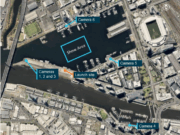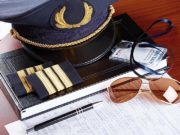Three major aviation organizations are asking the U.S. Congress to reverse legislation that limits the role of the Federal Aviation Administration (FAA) in regulating all aspects of drone operations.
In a letter sent Tuesday to members of Congress, the Air Line Pilots Association, International (ALPA), Airlines for America (A4A) and the National Air Traffic Controllers Association (NATCA) criticized a section of the 2012 FAA Modernization and Reform Act that says the FAA may not apply rules or regulations to drones — also known as unmanned aircraft systems (UAS) — that are operated for recreation or as a hobby.
The provision in the law “has limited the FAA’s ability to fully regulate UAS to the point that safety of the national airspace is at risk,” the letter said.
“We strongly urge you to remove legislative restrictions that have been placed on the FAA that limit its safety oversight of UAS,” the letter said. “The likelihood that a drone will collide with an airline aircraft is increasing. By providing the FAA with the full authority to regulate all UAS operations, the safety of passenger and cargo flights will be protected.”
The letter noted that the need for FAA regulation has been illustrated by recent events in which a drone and a manned aircraft have narrowly avoided a collision. In the most recent occurrence, an unidentified drone apparently overflew a Frontier Airlines jet on final approach to Las Vegas McCarran International Airport. Video of the close encounter, apparently taken from the drone and then posted on the internet, shows the drone just a few feet above the airliner. The event remains under investigation.
The letter noted that small drones currently are not required to be equipped with electronic anti-collision technologies that could make flight crews aware of their locations “soon enough to take evasive action that would ensure that there was no threat of collision.”
The letter was signed by ALPA President Capt. Tim Canoll, A4A CEO Nicholas Calio and NATCA President Paul Rinaldi.


